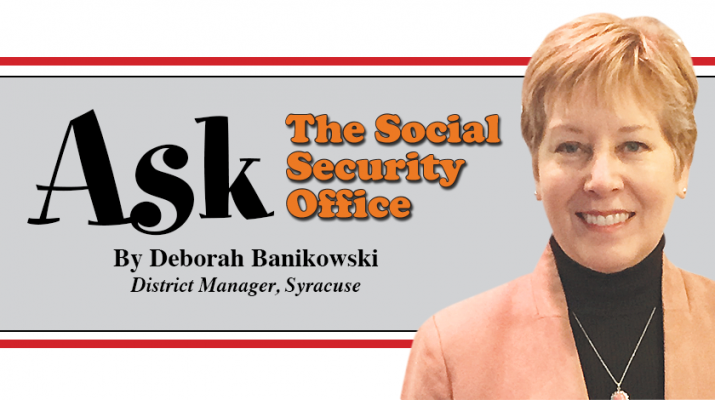By Deborah Banikowski
District Manager, Syracuse
Social Security and Medicare have a few things in common. Both programs help safeguard millions of Americans as well as improve the quality of life for our family and friends. Although both programs are household names, many people may not be familiar with the details of Medicare.
Medicare is our country’s health insurance program for people aged 65 or older. The program helps with the cost of health care, but it doesn’t cover all medical expenses or the cost of most long-term care. You have choices for how you get Medicare coverage. If you choose to have original Medicare coverage, you can buy a Medicare supplement policy (called Medigap) from a private insurance company to cover some of the costs that Medicare does not.
Medicare has four parts:
• Medicare Part A (hospital insurance) helps pay for inpatient care in a hospital or skilled nursing facility (following a hospital stay). Part A also pays for some home health care and hospice care.
• Medicare Part B (medical insurance) helps pay for services from doctors and other health care providers, outpatient care, home health care, durable medical equipment, and some preventive services.
• Medicare Part C (Medicare Advantage) includes all benefits and services covered under Part A and Part B. Some plans include Medicare prescription drug coverage (Medicare Part D) and other extra benefits and services.
• Medicare Part D (Medicare prescription drug coverage) helps cover the cost of prescription drugs. Some people with limited resources and income may also be able to get Extra Help with the costs — monthly premiums, annual deductibles, and prescription co-payments — related to a Medicare prescription drug plan. The Extra Help is estimated to be worth about $4,900 per year. You must meet the resources and income requirement.
Medicare’s different parts are further explained in our publication at www.socialsecurity.gov/pubs/EN-05-10043.pdf.
If you can’t afford to pay your Medicare premiums and other medical costs, you may be able to get help from the state. States offer programs for people eligible for or entitled to Medicare who have low income. Some programs may pay for Medicare premiums and some pay Medicare deductibles and coinsurance. To qualify, you must have Medicare Part A and have limited income and resources.
You can learn more about Medicare, including how to apply for Medicare and get a replacement Medicare card, at www.socialsecurity.gov/benefits/medicare.

